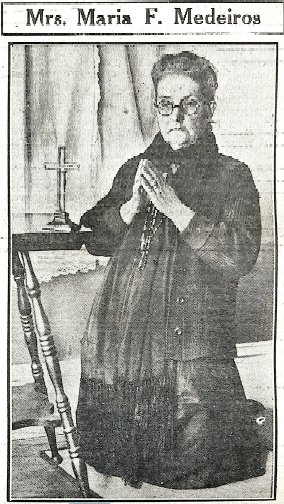Celestino Medeiros; In the shadow of Sacco and Vanzetti
By Christopher Daley
The Story of Nicola Sacco and Bartolomeo Vanzetti
What famous names come to mind when thinking of New Bedford? Some names that may pop into one’s head immediately are Herman Melville, Frederick Douglass or possibly Hetty Green, the “Witch of Wall Street.” One man whose name probably wouldn’t make it to your list but nonetheless was very famous or rather infamous in his own time was Celestino Medeiros. He is totally forgotten today, yet in 1927 his name was on the lips of thousands and in the headlines of newspapers around the world. He lies buried in a pauper’s grave in the City of New Bedford at the Pine Grove Cemetery marked only as grave 339.
The reason for his short-lived notoriety was his involvement in the world famous Sacco-Vanzetti Case. In 1921 two immigrant Italian anarchists, Nicola Sacco and Bartolomeo Vanzetti were tried, convicted and then sentenced to death for the brutal murder and robbery of a paymaster and his guard while delivering a payroll of about $15,000 to a shoe factory in South Braintree, Massachusetts. The case became a cause célèbre among many left wing groups and gained worldwide attention.
The common belief among the Sacco-Vanzetti supporters was that the two had been “railroaded” by a corrupt capitalist judicial system for the sole reason that they were both Italian and anarchists. These supporters believed that the two were totally innocent of the crime. The propaganda put out by the Sacco-Vanzetti Defense Committee created a whirl-wind of fervor over the case. There were protest marches to free Sacco and Vanzetti all around America and Europe and as far as Japan. After 1921 there were several motions for a new trial none of which were accepted. Then in 1925 there was a break in the case, one that looked like it might save Sacco and Vanzetti from the electric chair.
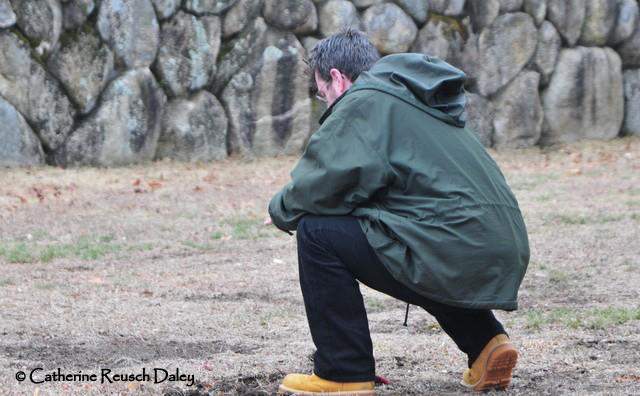
Finding Grave #339 (Catherine Reusch Daley)
Awaiting Conviction Appeal
On November 18th, 1925 Celestino Medeiros, awaiting an appeal of his conviction for killing a bank clerk in a botched robbery in Wrentham, passed a note made out on a slip of paper to a trustee at the Dedham Jail. Medeiros’ instructions were to bring the note to Nick Sacco who was a few cells down. Sacco received the note and opened it: “I hereby confess to being in the South Braintree Company crime and Sacco and Vanzetti was not in said crime,” the note stated. Sacco immediately contacted his lawyers and soon they had Medeiros writing out a full confession for them. In his full confession he related that he was in the getaway car sitting in the back seat with a gun and instructions to shoot anyone that came up to the car during the robbery.
He further stated that the gang he was involved with was a gang working out of Providence and New Bedford that had been involved in stealing shoe shipments. Medeiros refused to name the members of the gang but he did say they had double crossed him and not paid him for the job. Out of some warped sense of honor among thieves or some criminal code that he perceived he would not budge and never gave up the names of the gang involved.
Sacco and Vanzetti’s lawyer however investigated with what little information Medeiros had given and found a gang working out of Providence and New Bedford with some members who had been arrested for stealing shoe shipments from none other than the Slatter Morrill Shoe Factory in South Braintree where the murder-robbery of which Sacco and Vanzetti were accused took place. This gang turned out to be the notorious Morrelli gang headed by the two Morelli brothers Joe and Frank (also known as “Butsey”). Later, Butsey would become the first Don, or Godfather, of the New England Mafia.
Who was Celestino Medeiros?
Who was this Celestino Medeiros from New Bedford and how did his life go so wrong? Celestino F. Medeiros was born on March 9th, 1902 at Villa Franca, San Miquel of the Azores Islands. He and his parents immigrated to New Bedford around 1904. He attended school in the city until about the age of 15. He did not do well in school due to a problem with his eyesight, which may have been connected to his having epilepsy. It seems he had petite mal seizures and would have blackouts; he would also go blind for long periods of time. Herbert Ehrmann in his book “The Untried Case” states “because of this defect it was at first thought the lad was of subnormal intelligence, but as he matured this apparent sub-normality disappeared. At the time of his trial in 1926 his intelligence rated at least average if not higher.”
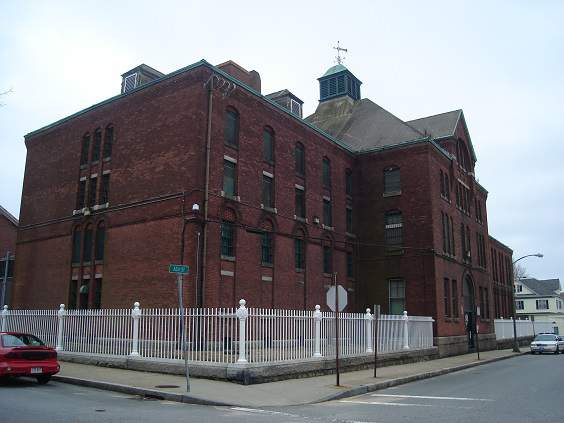
House of Correction where C. Medeiros served time
By the age of 14, Medeiros was well on his way to a life of crime with a rap sheet of 12 arrests and a court record of 12 convictions. At the age of 15 he dropped out of school and began his life as a career criminal. By the age of 17 he became associated with a grifter named Arthur Tatro who had concocted a scam in which he, his girlfriend, Medeiros and his sister Mary all posed as members of the fictional American Rescue League. They dressed in elaborate blue-gray uniforms which were very reminiscent of the ones worn by the Salvation Army at the time. They worked the streets of Fox Point- the Portuguese section of Providence and in nearby Fall River, Taunton and New Bedford soliciting donations from the unsuspecting for their criminal cause. On May 1st, 1920 the police caught up with Tatro and Medeiros. They were arrested for fraud and impersonation.
Just 24 days later while out on bail Madeiros was arrested again for breaking into a shop during the night. He was sentenced for the crime on June 14th and remanded to the New Bedford House of Correction where he remained until December 1920. Around this time something happened which has caused historians to believe that Medeiros may have been involved in the April 15th 1920 South Braintree robbery for which Sacco and Vanzetti were convicted.
In January of 1921, Medeiros mysteriously came into possession of a large sum of cash which according to different accounts amounted to about $2,800.00. This amount has been pointed out by some historians to approximately 1/6 of the payroll money stolen in South Braintree. According to Medeiros’ own signed confession there were six bandits in all at South Braintree. With his new found wealth Medeiros left Providence and traveled for the next two years down to Mexico and Texas and as far as St. Paul Minnesota with an un-named “circus girl.”
A Return to New Bedford; Gun Battle
In 1923 Medeiros returned to the New Bedford area and went into business on his own as a contractor. He built several garages but soon found he wasn’t making enough money and in March 1924 he found himself a job working as a bouncer for Barney Monterios, a Cape Verde Brava, who ran a speakeasy called the Bluebird Inn located in Seekonk, Massachusetts, just four miles over the state line from Providence. He acted as chauffeur during the day for Barney’s common law wife Mae Boice, who has been variously described as exceedingly handsome brassy blonde by various writers.
While off duty he spent his spare time up in his room with one of the clubs “girls” named Tessie. It is said that he would lie in bed and scare Tessie by shooting flies off the ceiling with his .38 or his .45 revolver. It’s also said that he once used Mae’s cats for target practice an incident which sent her into a furor but was soon forgiven. Another incident that has been recalled occurred on July of 1923, when Bibber Barone, a known associate of the Morelli Gang descended upon the Bluebird Inn with several other gangsters, and demanded to take Tessie away.
Medeiros came out onto the porch with pistols drawn and according to Mae Boice’s account, yelled that Bibber “and his gang had double-crossed him once and he could forgive them for that, but if they took the girl he would bump them all and it would be sure death.” At this threat Bibber and his fellow gangsters climbed back into their car and roared back to Providence. By the following autumn Medeiros’ affections turned from Tessie toward Mae. Allegedly he flashed a wad of money in front of Mae and asked her to run off with him. When her husband Barney found out he wouldn’t stand for it and fired Medeiros and told him to get out, which resulted in a pitched gun battle in the front yard of the Bluebird Inn. No one was injured; the only victim of the shootout being Medeiros’ taillight which was shattered by Barney’s parting shot as Madeiros fled in his automobile.
Bank Robbery, Murder and Manhunt
On the morning of November 1st, 1924 Celestino Medeiros along with three other accomplices, Jimmy Weeks, Alfred Bedard and Harry Goldenberg, walked into the First National Bank at Wrentham, Massachusetts and told the patrons and the clerks that “this is a stick up.” Medeiros, while training his .45 revolver on the elderly cashier named Carpenter, ordered him to turn over the money. Instead of following directions the Carpenter made a move for the alarm button at which time Medeiros shot him point blank. Upon seeing this, the other bandits along with Medeiros ran out of the bank, sped off in their car and quickly went into hiding. The cashier died from the gunshot wounds within a day.
A few days later after a man hunt for the three, Medeiros was picked up in Providence at Zack’s Hotel, a rundown flop house with two other Portuguese transients, Mingo and Pacheco. Weeks and Bedard were captured a short time later, Goldenberg was never captured. Weeks and Bedard agreed to turn states evidence against Medeiros in exchange for a life sentence and as a result Medeiros was convicted of 1st degree murder and sentenced to death. An appeal was made on the basis that the judge did not instruct the jury that Medeiros was innocent until proven guilty and a new trial was ordered. It was while awaiting the decision on his appeal in Dedham jail that Medeiros passed his now famous slip of paper to Sacco. Medeiros did win a new trial but with the same result he was again convicted of murder and sentenced to death.
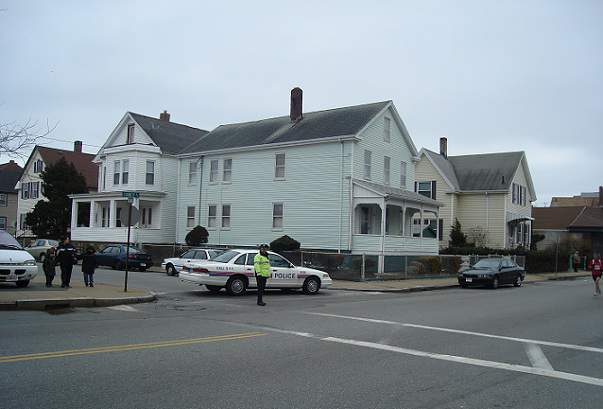
Rogers & Silvia Funeral Parlor
Sacco and Vanzetti’s lawyers, William Thompson and Herbert Ehrmann made a motion for new trial based on Medeiros’ confession and the supporting evidence they found that pointed toward the Morelli Gang as the real culprits in the South Braintree crime. Judge Webster Thayer, the same judge who officiated at Sacco and Vanzetti’s trial and who overruled several previous defense motions for new trial overruled the Medeiros motion and stated that “Medeiros is, without a doubt, a crook, a thief, a robber, a liar, a rum-runner, a bouncer in a house of ill-fame, a smuggler, and a man who has been convicted and sentenced to death for the murder of one Carpenter, who was cashier of the Wrentham Bank.” Thayer believing Medeiros to be lying about being involved in the robbery, also pointed to the fact that Medeiros could not identify any of the landmarks at Braintree nor the caliber of the weapons used by his accomplices and that the Morelli’s had provided affidavits with alibi’s (later found to be concocted) stating that they had no hand in the South Braintree holdup.
“…execution came amidst worldwide marches, protests and riots…”
In a strange twist of irony Sacco, Vanzetti and Medeiros were all scheduled to be executed together. The date of the execution came amidst worldwide marches, protests and riots to free Sacco and Vanzetti. The three were kept in the death house at Charlestown State Prison in adjoining cells. Each of the condemned was offered the services of a chaplain. Sacco and Vanzetti being anarchists and opposed to organized religion, refused. Medeiros, who was brought up Catholic, was in somewhat of a stupor refused the services of a priest as well. The clock struck twelve midnight on August 23, 1927. Of the three condemned men, Medeiros was the first to go to the electric chair. At approximately 12:03am two guards appeared a Medeiros’ cell. As if in a semi coma Medeiros rose and was escorted down the hallway into the brightly lighted death chamber into the view of the witnesses, guards and warden. He was guided into the electric chair. His arms were strapped down as he stared off into some distant plane.
The electrodes were placed on him and a leather headpiece was affixed to the top of this head. Then the guard placed the black mask over his eyes. The air stood silent as the guards motioned that all was set. Warden Hendry gave a nod and the executioner pulled the switch. Medeiros’ body began to shake and stiffen. It appeared to levitate in the chair as 300 volts of electricity coursed through his body. After a few seconds those in the chamber noticed the smell of burning hair. The executioner switched the current on then off three times and then Dr. McLaughlin approached applied his stethoscope and pronounced Medeiros dead. The body was quickly put on a stretcher and removed from the chamber. At about 12:11 Sacco was brought in. Looking about at the witnesses and the warden he exclaimed “Vive La anarchy” (Long live anarchy). Then he grew calmer, as if resigned to his fate.
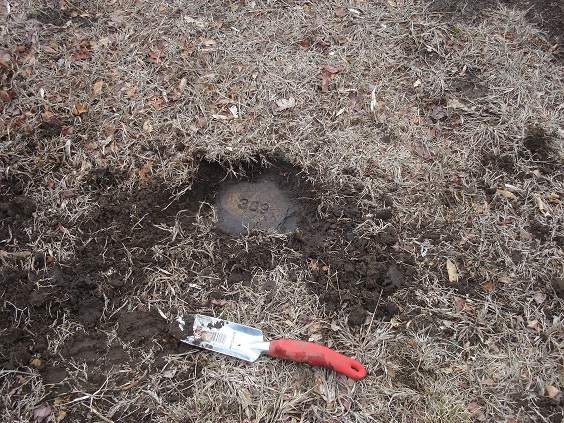
Grave #339 at Pine Grove Cemetery
As he was being strapped into the chair he quietly uttered “Farewell my wife and child and all my friends.” The electrodes were fixed, the headpiece applied and then the mask. Warden Hendry nodded once more and the executioner acknowledged the signal and pulled the lever. Then in Italian Sacco called out “mother” and was dispatched to eternity. At 12:18 the last to take the chair was Vanzetti. Vanzetti walked in the death room with great vigor, stood near the warden and then said “I wish to say that I am innocent, I have never done a crime, some sins, but never a crime. I thank you for everything you have done for me. I am innocent of all crime, not only this one, but of all, al all, I am an innocent man.” He shook the hands with Warden Hendry, Deputy Warden Hoggsett, Dr. McLaughlin, and two of his guards and then sat in the chair. Strapped in the chair with the mask over his eyes Vanzetti spoke up once again and said “I now wish to forgive some people for what they are doing to me” A teary eyed Warden Hendry reluctantly performed his duty and gave the final nod. The lever was pulled and minutes later Vanzetti was pronounced dead.
Post Mortem
At the news of the executions riots broke out in several countries and at home in America. The supporters of Sacco and Vanzetti were crushed. Arrangements were made and Sacco and Vanzetti’s bodies were put on display at Langone’s Funeral Parlor on Hanover Street in Boston’s North End for thousands to see. The next day there was funeral procession to the cemetery in which thousands participated. All the attention was on Sacco and Vanzetti as they took their place in history and Celestino Mederios’ place began to slip away.
Medeiros’ body was claimed by his relatives and brought to Rogers and Sylvia Funeral Parlor at 216 County Street New Bedford where a few hundred of the curious viewed it. Feeling badly and thinking the Medeiros family destitute, the mayor of the city said that the city of New Bedford would pay for the funeral and the burial. It was later found that Medeiros’ mother owned a tenement building at 735 Belleville Avenue in New Bedford and the city revoked the offer of a free burial because the family was not destitute as the mayor had previously been led to believe. As a result, little money was available and Medeiros was buried in the pauper’s section of Pine Grove Cemetery, the marker “339” is the only thing to commemorate a life of crime and a connection to one of the world’s most famous murder cases.
